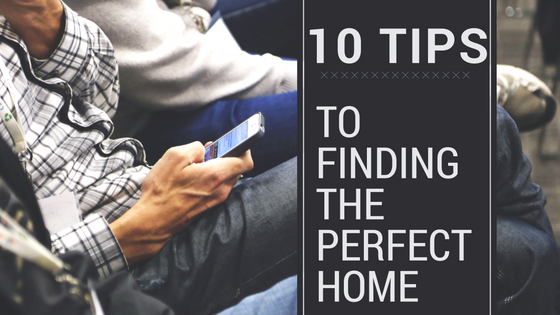10 Tips to find the perfect home
Cameron Fisher | 22nd November, 2016

Now that you’re ready to purchase a place, you want to make sure it’s the right one for you. Follow these tips to find a home that’s a perfect fit for you:
1. Go for the long haul
When looking for a home, search for one that you could see yourself living in for several years — at least five to seven years is ideal. Buying — and moving — to a new home takes a lot of time and effort, and can add up significantly in closing and moving costs, etc. Staying in place longer will help you avoid those added expenses. Plus, the extra time spent in your home could be just enough to help you ride out a downturn in the real estate market.
2. Leave room to grow
Aim for a home that can adapt to your needs as your life changes, say, if you have a new baby, or Junior moves back in after college. If you can’t afford a place that’s large enough to meet your anticipated future needs now, look for one that will allow you to build on later on.
3. Be flexible
Consider a place with rooms that can serve multiple functions, so the home remains highly functional for you through the years. For example, an open-floor-plan-style home is very adaptable. A kitchen that overlooks a family room is helpful when one’s children are young (you can cook while watching the kids), while such a kitchen is also great for entertaining your friends once the kids leave the roost.
Related Article: How to: Buy & sell at the same time
4. Go for your type
Think about what style of home fits you best — house, condo, townhome, etc. — they’re not one size fits all. For example, a single-family home — which sits on its own lot and must be maintained by the homeowner — may be great for a person seeking privacy, but not so wonderful for somebody who doesn’t want to worry about mowing the lawn, fixing the plumbing, etc. Meanwhile, a condo might be perfect for somebody who wants a “lock ‘n’ leave” lifestyle, but not for somebody who doesn’t like sharing a wall with his neighbors.
5. Check the surroundings
When you purchase a home, you not only get a house, you also buy into a neighborhood. Think about whether that neighborhood will suit you. Sure, you might love the house itself, but will the loud neighbors next door or the school across the street become too bothersome for you? Also, do you like the feel of the neighborhood and does it offer everything you need? It’s best to find a place in a community that you’ll enjoy.
6. Buy what you can afford
It’s easy to shoot for the sky and overspend when buying a home — you understandably want the best your money can buy. Examine your finances, keeping in mind current and future expenses, and don’t exceed your means. It’s smarter to buy a home you can easily afford than one you have to stretch to get into. Stay down to earth, and you’ll be better prepared should unexpected financial commitments and problems arise later down the road.
7. Think “home” first
When purchasing a home, don’t imagine the dollar signs you’ll see the day you sell it. A home is just that — primarily a “home,” and not an investment. So, buy a place that’d be great to live in first and think about its resale value second. Predicting real estate cycles and home appreciation is tough enough for the experts — and much more for the average home buyer. Plus, while home renovations tend to add value to a residence, they rarely recoup more than what was spent on them.
Related Article: Top 10 Turn-Ons & Turn Off’s by Aussie Home Buyers
8. Look at both old and new
It’s nice to move into a place that’s brand-new. But, new isn’t always better. Consider both old and new. While you might not like a previous homeowner’s decorating decisions, you might like the owner-installed upgrades — like a finished basement and a backyard deck — that a new home might not have.
9. Location, location
You’ve heard this tip before, but a home’s location does matter. A house that’s located on a busy, noisy street may be less enjoyable to you as a homeowner than one situated on a quiet, secluded cul-de-sac. Plus, a home on a cul-de-sac is likely to be worth more than a poorly located one when it comes time to resell. So consider a home’s location before you’re smitten by a spectacular interior.
10. When it comes time to sell
While you want to think of your place as a home first and not an investment, it doesn’t make sense to purchase a white elephant, either. You should put at least some thought into how easy — or difficult — it’ll be to resell the home one day. If a home is so unlike other nearby homes in terms of size, style, price, etc., you might want to skip it and look elsewhere — it could become a burden should you want to someday move on.
This article was originally published via trulia.com, 14 Oct 2009





Leave a Reply